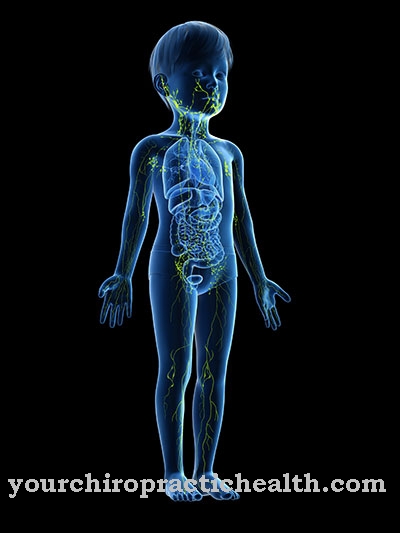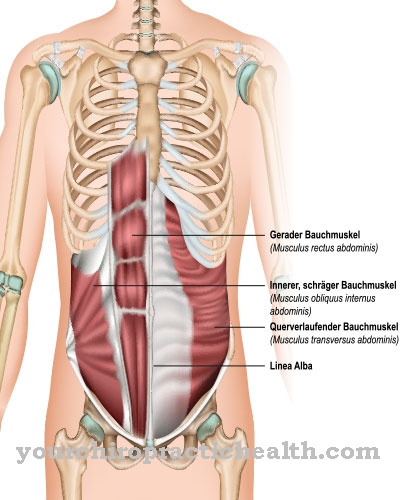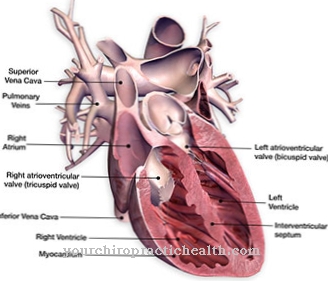From one obsessive-compulsive personality disorder is the talk when the people concerned show a rigid and perfectionist way of thinking and acting. In doing so, they suffer from strong doubts and indecision.
What is Compulsive Personality Disorder?
In medicine, the obsessive-compulsive personality disorder also as Obsessive-Compulsive Personality Disorder or anankastic personality disorder designated. The term comes from the ancient Greek word Ananke and means “compulsion” or “inevitability”. Typical characteristics of compulsive personality disorder are perfectionism, compulsive control, mental immobility, fearful caution, and strong doubts.
However, obsessive-compulsive personality disorder differs significantly from the usual obsessive-compulsive disorder. Obsessive-compulsive disorder is an Axis I disorder in which primarily an ego-dystonic symptom occurs. The reason for this are disorders of the brain metabolism. Compulsive personality disorder, on the other hand, is an axis II psychological disorder. This is mainly characterized by ego-syntonic complaints.
Overall, around two to five percent of the population suffer from an obsessive-compulsive personality disorder. It shows up twice as often in the male sex as in the female sex. It is not uncommon for anankastic personality disorder to be associated with depression. In addition, there may be other obsessive-compulsive disorders at the same time.
causes
The exact causes of compulsive personality disorder are not well understood. They are not caused by other psychiatric disorders or immediate brain damage. From a psychoanalytic point of view, strict and punitive toilet training is suspected. This resulted in a strongly developed so-called “superego” in the affected persons.
The patients place extremely high demands on order and cleanliness. At the same time, they are very inhibited. Many psychoanalysts suspect that there were significant power struggles with parents over control in the childhood of the patient. These led to aggressive impulses that were suppressed by those affected.
The patients gain control over their behavior by stubbornly sticking to their habits and rules. However, there was little scientific evidence for this theory. Cognitive therapy assumes that special thought processes are important in maintaining compulsive personality disorder.
For example, patients often have a pronounced black and white thinking. Furthermore, they fear in an exaggerated way the negative effects of making mistakes themselves. This in turn results in a perfectionist, rigid, rigid and at the same time very hesitant behavior.
Symptoms, ailments & signs
Typical symptoms of an obsessive-compulsive personality disorder are the abnormal behavior of the patient. So they basically have a lot of doubts about themselves, but also about other people. A characteristic feature of anankastic personality disorder is that those affected take on a variety of tasks that should be carried out to perfection.
In doing so, however, they often lose track of what is happening. Furthermore, the patients feel a permanent sense of control. It doesn't matter whether the tasks they do are important or not. Those affected do not set certain priorities. While unimportant tasks are given preference, important things are neglected and postponed.
People with obsessive-compulsive personality disorder often act sensible and logical. However, they do not tolerate other people's feelings. In addition, they do not manage to show warmth to their fellow human beings. Work and productivity take precedence over fun and social interaction.
Leisure activities are carefully planned and no longer changed. Another characteristic of compulsive personality disorder is stubbornness and selfishness. So other people are required to submit to the patient.
Diagnosis & course of disease
Clinical-psychological examinations are required to diagnose an obsessive-compulsive personality disorder. The therapist deals with the patient's anamnesis, creates a psychopathological finding and carries out psychological tests. The presence of at least four typical properties or behaviors is decisive for the diagnosis.
These include the patient's constant preoccupation with order, rules, planning and details, exaggerated doubts and caution, perfectionism, which hinders the completion of tasks, and excessive conscientiousness, in which interpersonal relationships and pleasure are neglected.
Other possible criteria are stubbornness, rigidity, excessive pedantry and the imposition of undesirable thoughts. A cure for compulsive personality disorder is not yet possible. Neither pharmacological nor psychotherapeutic treatment approaches have been adequately investigated.
Complications
Many personality disorders come along with one or more forms. This also applies to compulsive personality disorder. Most often, in addition to compulsive personality disorder, there is an anxiety-avoidant personality disorder. Three percent of those affected suffer from this additional personality disorder.
Anxious-avoidant personality disorder can develop as a direct consequence of compulsive personality disorder, as those affected often fear that they will not meet their own (very high) standards. Obsessive-compulsive disorder can also occur as a complication of obsessive-compulsive personality disorders. These are characterized by obsessive thoughts or compulsive acts, whereby the person concerned usually knows that the compulsion itself is pointless or excessive.
Another possible complication of compulsive personality disorder is mood disorders. Depression, in particular, is common. The spectrum ranges from mild depressive moods to chronic depressive moods (dysthymia) and major depression. Suicidality is possible as a complication of depression or depressed mood.
Compulsive personality disorder can also coexist with an eating disorder. An exaggerated perfectionism, which can also be found in compulsive personality disorder, is typical for anorexics in particular. However, other eating disorders are also possible. An eating disorder can cause other complications, including severe physical consequences. Examples are electrolyte disorders, neurological disorders, and osteoporosis.
When should you go to the doctor?
People who exhibit behavior that can be described as above norm should be assessed by a doctor. If there are deliberate emotional or physical injuries to other people or recurring disorders in social behavior, it is advisable to consult a doctor. Compulsive acts, intense self-doubt, and violation of social rules are all cause for concern. If the execution of the assigned obligations is done to a constantly perfectionist extent, this should be interpreted as a warning signal.
People from the close social environment should point out the abnormalities to those affected. If the urge for perfectionism is continuously intensified, the person concerned needs help. An addiction to control, the loss of a sense of reality and the assumption of innumerable tasks are further signs of a health irregularity. A creeping increase in behavioral problems is characteristic.
In some cases, the peculiarities occur after a fall, accident or violence on the head. There is a need for action in the event of sudden as well as continuous abnormalities. If there is a lack of tolerance, empathy and consideration for other people, the procedure should be examined more closely. The appearance of compulsive personality disorder includes a lack of insight on the part of the person concerned. Therefore, the cooperation of a relative is often necessary. Only if there is a good relationship of trust with another person does the person concerned seek advice from a doctor.
Treatment & Therapy
Since a cure for the anankastic personality disorder cannot be achieved, the focus of the therapy is on improving the patient's social skills. The structuring of his environment and the application of what he has learned in everyday life are also in the foreground. Sociotherapy and psychotherapy are the most important therapeutic concepts for this.
In most cases, however, patients do not go to a therapist on their own initiative, but because they are under strong social pressure from their partner or family. Of particular importance for the success of the treatment is a stable relationship between therapist and patient, which should be strengthened right from the start of therapy. However, building this relationship can be challenging.
Failure to successfully establish a good relationship usually results in the end of therapy. If there is comorbidity, such as depression, medication such as antidepressants can be administered. In the case of accompanying anxiety disorders, the patient is often given neuroleptics. Lithium and carbamazepine are other helpful drugs.
You can find your medication here
➔ Drugs for personality disordersprevention
Unfortunately, preventing obsessive-compulsive personality disorder is not possible. The underlying causes of the mental disorder have not yet been fully researched.
You can do that yourself
When the person concerned realizes that he / she suffers from an obsessive-compulsive personality disorder, the first step towards improvement is already taken. However, there is now a long way to go before those affected will improve. Psychotherapy and sociotherapy are the measures that should accompany this path most often.
Insight is the first step. But it is important that those affected become aware of their illness anew every day in order to recognize patterns and to be able to break through them. Sick people often withdraw from their social environment, if they are involved in one at all. But this withdrawal is very destructive. If those affected know this about themselves, they have the chance to act against it and consciously seek contact with loving fellow human beings. It is the same with perfectionism and the compulsion to control, from which most of those affected suffer. If the sick person is aware of this, he / she can only take the necessary steps against it. It is an important step to realize that this behavior is harmful to your own health. It is important to be aware of your own needs in everyday life in order to feel the limits to exhaustion in good time.
Self-help can only play a supporting role in therapy.

.jpg)


.jpg)






















